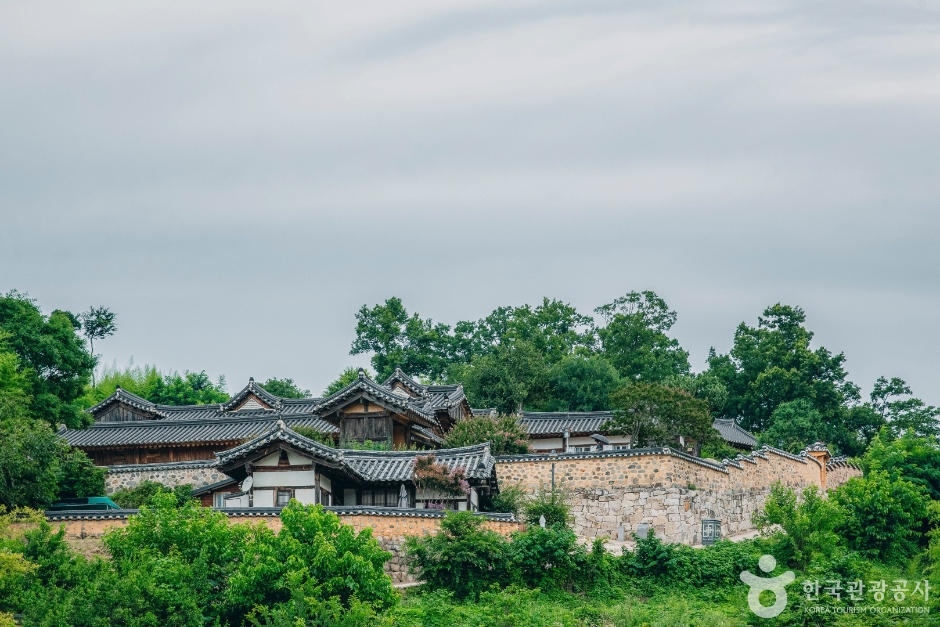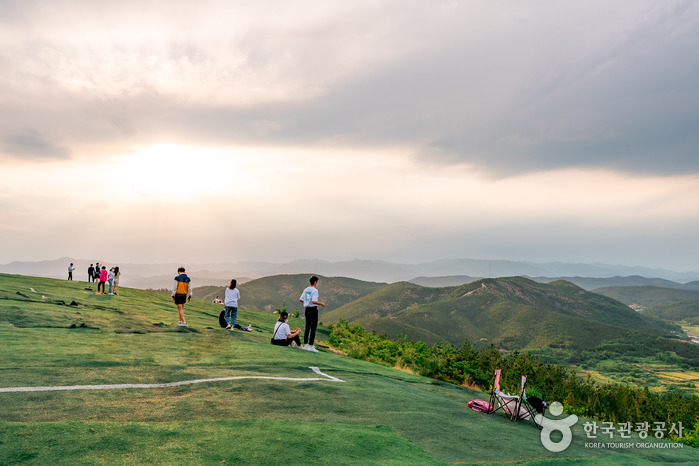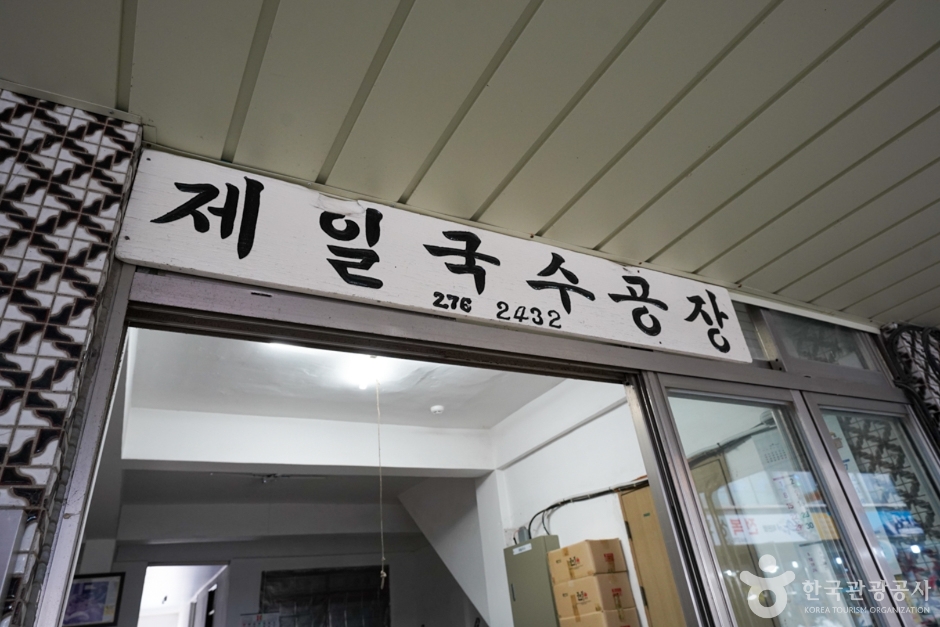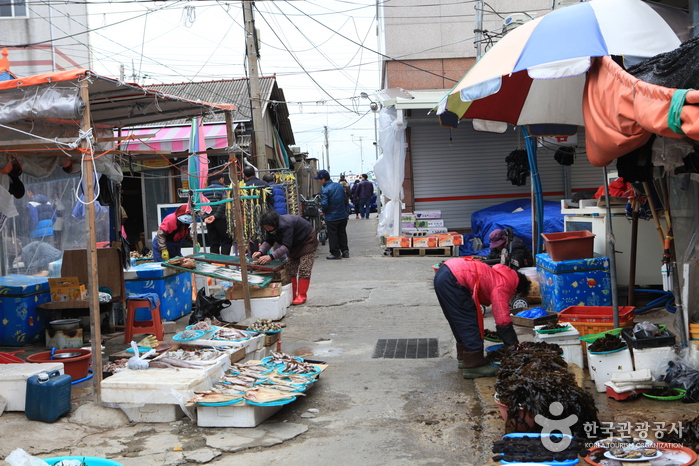Hyangdan (향단)
11.0Km 2025-03-24
121-83 Yangdongmaeul-gil, Gangdong-myeon, Gyeongju-si, Gyeongsangbuk-do
+82-10-6689-3575
Hyangdan in Yangdong Village, Gyeongju, Gyeongsangbuk-do, is a grand old house designated as a National Treasure. It is a 500-year-old hanok building that now operates as a lodging facility for guests who are looking for a good night's rest in a cozy traditional atmosphere.
Gyeongju Yangdong Village [UNESCO World Heritage] (경주 양동마을 [유네스코 세계유산])
11.1Km 2025-03-24
134 Yangdongmaeul-gil, Gyeongju-si, Gyeongsangbuk-do
+82-54-762-2630
Gyeongju Yangdong Village is Korea’s largest traditional village, showcasing the traditional culture of the Joseon dynasty and the beautiful natural surroundings. Thanks to its many cultural heritages, including treasures, national treasures, and folklore materials, the entire village has been designated as a cultural heritage site. Many people have visited this village to see its wealth of cultural heritages and scenic surroundings, including King Charles III, who visited this village in 1993.
Seolchangsan Mountain and its four spines of mountains can be seen beyond the village. Approximately 160 old houses and 500-year-old thatched-roof cottages are nestled within the valley. Fifty-four of these homes are over 200 years old and have been excellently preserved in their original state, offering the opportunity to view a variety of unique traditional Korean houses in person.
Gonnyunsan Mountain Paragliding Site (곤륜산 활공장)
11.1Km 2025-03-17
Heunghae-eup, Buk-gu, Pohang-si, Gyeongsangbuk-do
Gonnyunsan Mountain Paragliding Site is a trending location in Pohang, offering amazing views over the coastal region and ocean beyond.
Oeosa Temple (오어사(포항))
12.2Km 2023-01-25
1 , Oeo-ro, Nam-gu, Pohang-si, Gyeongsangbuk-do
+82-54-292-2083
Oeosa Temple in Unjesan Mountain is a place where the deep scent of Buddha can be felt with a lake that looks like a dragon wrapped around it and the strangely-shaped cliffs which harmonizes like an oriental painting. Oeosa Temple is a sacred place where the four great patriarchs of Silla were born. This temple was built during the reign of King Jinpyeong (579-632), the 26th ruler of Silla. It was originally called Hangsasa Temple, but when Great Master Wonhyo and Zen Master Hyegong practiced religious asceticism here, a contest was held to revive the fish in the stream with religious power. However, one of them did not survive, and the other did and swam vigorously.
So each argued that he himself saved the fish, so they called it Oeosa Temple by writing the characters 'O' and 'Eo.' Daeungjeon Hall has a hip-and-gable roof with three bays in the front and two in the side. It was rebuilt in the 17th year of King Yeongjo of the Joseon dynasty (1741). Around the temple, the beautiful natural scenery of Unjesan Mountain and the blue water of Oeoji are spectacular. Jajangam Hermitage can be seen on the rocky cliff, and Wonhyoam Hermitage can be seen to the west of Oeosa Temple. Daeungjeon Hall (Gyeongbuk cultural heritage) has a national treasure bell, Buddhist monk Wonhyo's hat, and many other relics.
Sabang Memorial Park (사방기념공원)
13.5Km 2024-10-24
1712 Haean-ro, Heunghae-eup, Buk-gu, Pohang-si, Gyeongsangbuk-do
Sabang Memorial Park was opened in 2007 to celebrate 100 years of the "sabang movement" (planting trees on empty hills & mountains) in Korea. The memorial park offers exhibitions of the grand-scale sabang project taken on by the Park Chung-hee administration in 1975-1980.
Yoon Restaurant (윤스토랑)
15.1Km 2024-10-24
2F, 1884-2 Haean-ro Cheongha-myeon, Buk-gu, Pohang-si, Gyeongsangbuk-do
+82-507-1380-6339
Yoon Dental Clinic opened by Hyejin
Yoon Dental Clinic, which Hyejin (Shin Mina) opened in Gongjin, has been operating as a restaurant after the drama ended. However, it still retains its appearance in the drama. The pale yellow building, the turquoise signboard, and even the information board for medical departments inside remain intact, attracting many visitors. The view of Pohang Beach through the long glass window of the restaurant is excellent, so any menu you eat will double the taste.
Igari Anchor Observatory (이가리 닻 전망대)
16.4Km 2023-01-02
Iga-ri, Buk-gu, Pohang-si, Gyeongsangbuk-do
+82-54-270-3204
Igari Anchor Observatory, located in Iga-ri, Cheongha-myeon, Buk-gu, Pohang-si, is an observatory in the shape of an anchor that anchors ships near the beautiful beach and blue sea pines. With a x_height of 10 meters and a length of 102 meters, visitors can see the open sea of Pohang at a glance. It is also a popular attraction visited by many tourists as the main filming location for the popular drama "Run On (2020)."
Beopgwangsa Temple - Pohang (법광사 (포항))
16.6Km 2020-03-25
290, Sangeup-gil, Buk-gu, Pohang-si, Gyeongsangbuk-do
+82-54-243-0178
Beopgwangsa Temple is located at the foot of Bihaksan Mountain in the city of Pohang, Gyeongsangbuk-do Province. It was originally built during the reign of King Jinpyeong (579-631) of the Silla Kingdom by Great Monk Wonhyo upon the order of the king.
The temple used to be large measuring 525 kan (kan is a traditional measurement of distance between two columns, about 1.8 meters), but most of its buildings burned down in a fire in 1863. The current buildings were rebuilt in 1952. The site of the old temple is designated as Historical Site no. 493. Some of the remaining relics are a three-story pagoda, Bulsangyeonhwadaejwa (Buddha on a lotus stand), and a twin Ssanggwibu (turtle-shaped stone base of a monument).
Jeil Guksu Gongjang (제일국수공장)
17.2Km 2024-02-21
19-2 Homi-ro 221beon-gil, Guryongpo-eup, Nam-gu, Pohang-si, Gyeongsangbuk-do
Jeil Guksu Gongjang is a noodle factory in Guryongpo Market. It is the only place in Korea where noodles are dried by the sea breeze. It produces somyeon (thin noodles), jungmyeon (medium thick noodles), and kalguksumyeon (wide thick noodles), selling them in bundles or boxes. Near Guryongpo Beach, you can try a variety of noodle dishes at Haepungguksu 1st Branch, which is operated directly by the factory. Nearby attractions include the sunrise spot Homigot Cape, Guryongpo Port, and Guryongpo Modern History Museum.
Guryongpo Fifth-Day Market (구룡포장 (3, 8일))
17.3Km 2025-01-06
72-1, Guryongpo-gil, Nam-gu, Pohang-si, Gyeongsangbuk-do
+82-54-276-2761
Guryongpo Market area expands all the way to Changjucheon Stream area every fifth-day market day, bustling with crowds of merchants and customers. Guryongpo Fifth-Day Market is held on the 3rd, 8th, 13th, 23rd, and 28th of every month. The market first started when a small village was formed around Guryongpo Port. In the 1950s and '60s, when Guryongpo was incorporated into the county of Yeongil, Guryongpo Market flourished because it became the main market of Yeongil.
Nowadays, thanks to the rows of seafood restaurants inside, the market became even more popular among seafood lovers. The market carries a wide variety of fresh vegetables and produce, herbs, grains, and regional specialties. The seafood at the market is delivered fresh from Guryongpo Port. The squid at Guryongpo Port, which is also the specialty of the market, makes up about 70% of the total catch in Gyeongsangbuk-do. The market is also frequently visited by seafood gourmets for its squid.

![Gyeongju Yangdong Village [UNESCO World Heritage] (경주 양동마을 [유네스코 세계유산])](http://tong.visitkorea.or.kr/cms/resource/44/2654744_image2_1.jpg)





 English
English
 한국어
한국어 日本語
日本語 中文(简体)
中文(简体) Deutsch
Deutsch Français
Français Español
Español Русский
Русский